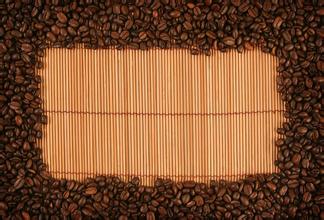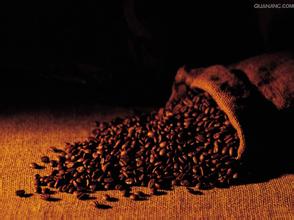How to tell if coffee beans are moldy what it would be like if they were cooked with moldy raw coffee beans?
How to tell if coffee beans are moldy what it would be like if they were cooked with moldy raw coffee beans?
Washing type:
Put the harvested fruit into a flowing tank, remove the floating fruit, and peel off the skin and flesh with a pulp remover. Then put it in the sink to remove the emerging pulp. After that, move into the fermentation tank, soak for half a day to a day, and then dissolve the gum on the surface of the fermented coffee beans.
After washing with water, drying it for a few days, drying it by machine, and finally using a sheller to remove the endocarp to become raw coffee beans that can be used as a commodity. In this way, it has a better color and less impurities than dried coffee beans. Colombia, Mexico, Guatemala and other countries use this method for about 70% of their coffee.
Judgment of appearance
Delicious coffee can be known from the shape of its roasted coffee beans. Of course, there can not be bad coffee beans mixed in, it is more important to note that normal beans will also be mixed with high-quality coffee beans and cause hindrance. A coffee bean that can brew delicious coffee must, first of all, be fat and crepe evenly, followed by the same size and colorless spots. These are the main points of visual discrimination, and it is not difficult to distinguish them if you look at them carefully.
Bad bean species
Fermented beans fermented coffee beans that fall from the soil before harvest. The moldy smell will have a great impact on the taste of coffee.
Dead beans, also known as unripe beans, or affected by climatic factors, the development is not perfect. Fried spots will be produced after baking, making the coffee have a green and astringent taste.
Black beans fermented beans, coffee beans that have rotted and blackened. Because it is black, it can be distinguished from normal coffee beans at a glance.
Moth beans Coffee beans infested by insects.
Defective beans may be stuck during work, or carelessly handled during handling, resulting in incomplete coffee beans. There are fried spots when baking, and will produce bitter and astringent taste.
Other remaining thin-skinned beans, stunted beans, dried beans that do not completely produce moldy flavor, only shell beans (shell beans)

Important Notice :
前街咖啡 FrontStreet Coffee has moved to new addredd:
FrontStreet Coffee Address: 315,Donghua East Road,GuangZhou
Tel:020 38364473
- Prev

What's the difference between a mocha pot and a coffee maker?
How is the coffee brewed in the mocha pot different from the mocha pot and the coffee maker? 1. Water level: use warm water, the water level is 0.5 cm under the safety valve. The safety valve will automatically relieve pressure when the lower pot pressure is too high, in order to prevent safety accidents. If the water level is higher than the safety valve, the function of the safety valve can not play normally. 2. Coffee powder: coffee powder is medium and fine, filled with powder trough.
- Next

The difference between siphon coffee and ice drop coffee how much is it per cup
How much is the difference between siphon coffee and iced coffee? how much is a cup of iced coffee because it usually takes 8-12 hours to make iced coffee, and unless the appliance is big enough, the amount of iced coffee that can be made at one time is very limited, and most coffee shops do not have large equipment. Household or coffee shop machines can produce up to 10-12 cups at a time. Due to the production time is too long and the quantity is limited, there is ice coffee.
Related
- What brand of black coffee is the most authentic and delicious? what are the characteristics of the flavor of the authentic Rose Summer Black Coffee?
- Introduction to the principle and characteristics of the correct use of mocha pot A detailed course of mocha pot brewing coffee is described in five steps.
- Which is better, decaf or regular coffee? how is decaf made?
- How much is a bag of four cat coffee?
- How about four Cat Coffee or Nestle Coffee? why is it a cheap scam?
- Which is better, Yunnan four Cats Coffee or Nestle Coffee? How about cat coffee? is it a fake scam? why is it so cheap?
- How about Cat Coffee? what grade is a hoax? which instant coffee tastes better, four Cat Coffee, Nestle Coffee or G7 coffee?
- Process flow chart of coffee making-Starbucks coffee making process what coffee tastes good at Starbucks
- The top ten best coffee beans in the world Rose summer coffee or Tanzanian coffee tastes good
- Yunnan four cat coffee is good to drink?_four cat coffee is a big brand? four cat blue mountain coffee is fake?

